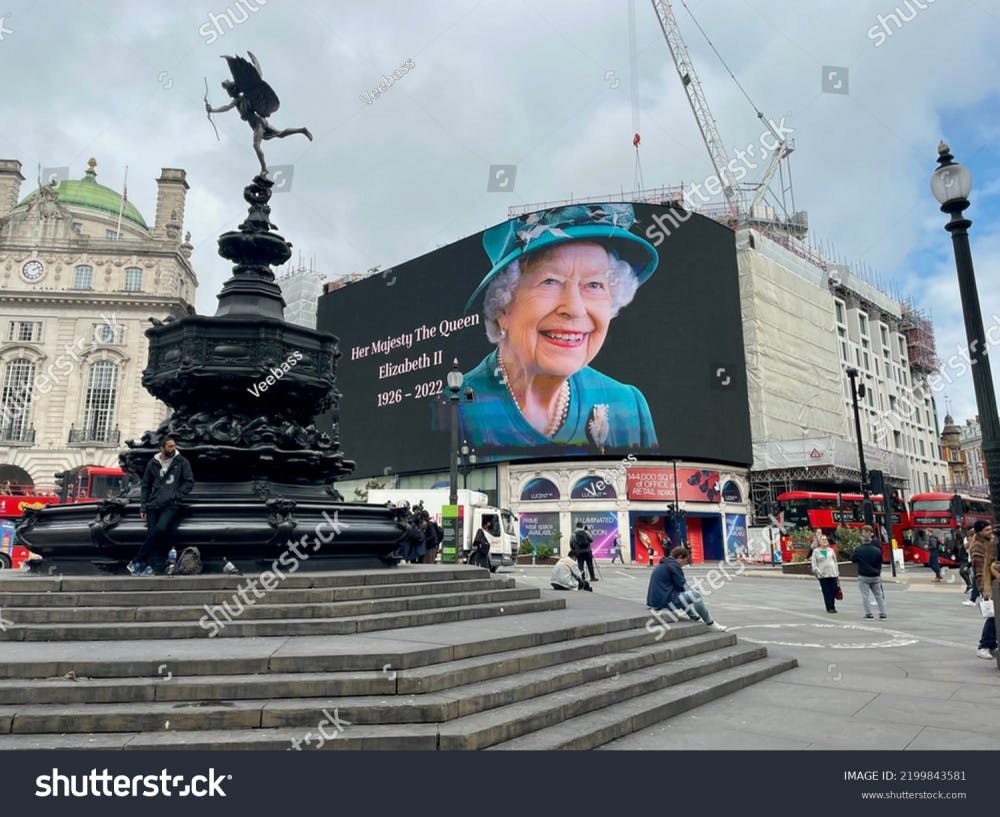By Anna Barrows
The year is 1945, and from the balcony of Buckingham Palace, King George VI and his family are waving excitedly to their joyful dancing subjects, below. It is a celebration in the streets of London as the daylight fades into a beautiful Spring evening.The second World War is finally over. The teenage Princess Elizabeth is dressed in her army uniform with her cap pulled down over her eyes (so as not to be recognized). Her younger sister, Princess Margaret, slips down from the balcony and into the rambunctious crowd to dance with their subjects. The streets are filled with happiness and relief and the princesses, unknowingly to the crowd, sneaks her way into a conga line. She, too, deserves the celebration just as much as everyone else.
World War II began when Princess Elizabeth was just 13 years old, and, in many ways, that is when her leadership abilities were first shaped. As the eldest daughter of King George VI, Princess Elizabeth devoted her life to public service. During World War II, Elizabeth made her first ever radio address to the children of Great Britain in an attempt to boost public morale. On her sixteenth birthday, she inspected the Grenadier Guards at Windsor Castle as the honorary colonel of the guards, symbolizing her military involvement in World War II. Then, at the mere age of 18, Princess Elizabeth was insistent upon joining the Auxiliary Territorial Service, which was the women’s branch of the British army. In the army, she was trained as an auto mechanic, and British newspapers dubbed her “Princess Auto Mechanic.” Princess Elizabeth’s patriotic actions during World War II set her up as the beloved leader now mourned by many.
Upon the death of her father not long after World War II, Elizabeth was crowned the Queen of England at 25 years old on Feb. 6, 1952. On this date, Elizabeth was in Kenya, making her the first Sovereign in 200 years to accede to the throne while abroad.
The role of the British monarchs is no longer political; instead, the United Kingdom has a Parliament–a legislative body of government which is in charge of the country’s politics. As the Queen of England, Elizabeth’s job was to give the United Kingdom a sense of unity, pride, identity and stability.She also attended church every Sunday as the Supreme Governor and Defender of the Church of England. Although present-day monarchs are not as politically active, they play an important role in national pride.
However, Elizabeth’s history as Queen was far from perfect. She never apologized for slavery and colonialism, after she was called upon to do so in the bicentennial anniversary of the abolition of slavery in 2007, which enraged many people.
It is, however, important to note that Queen Elizabeth II was the United Kingdom’s first modern ruler and came into power rather young. She was also the first monarch to harness the power of television.. Elizabeth was a proponent of talking to her subjects and supporting charities. As a result, she came across as relatable to her subjects.
Flash forward to the year 2022. As the sun rises on a chilly September morning outside of Westminster Hall, thousands of guests are lined up waiting to see Queen Elizabeth II in her final resting place. The Queen’s 70year reign is over, but before looking to the future, her subjects and people from all over the world have come to pay her their respects. Some people, bundled tightly in their coats, will wait hours, just to have a quick glance at the monarch who made a monumental mark on history over the last seven decades.
The year is 1945, and from the balcony of Buckingham Palace, King George VI and his family are waving excitedly to their joyful dancing subjects, below. It is a celebration in the streets of London as the daylight fades into a beautiful Spring evening.The second World War is finally over. The teenage Princess Elizabeth is dressed in her army uniform with her cap pulled down over her eyes (so as not to be recognized). Her younger sister, Princess Margaret, slips down from the balcony and into the rambunctious crowd to dance with their subjects. The streets are filled with happiness and relief and the princesses, unknowingly to the crowd, sneaks her way into a conga line. She, too, deserves the celebration just as much as everyone else.
World War II began when Princess Elizabeth was just 13 years old, and, in many ways, that is when her leadership abilities were first shaped. As the eldest daughter of King George VI, Princess Elizabeth devoted her life to public service. During World War II, Elizabeth made her first ever radio address to the children of Great Britain in an attempt to boost public morale. On her sixteenth birthday, she inspected the Grenadier Guards at Windsor Castle as the honorary colonel of the guards, symbolizing her military involvement in World War II. Then, at the mere age of 18, Princess Elizabeth was insistent upon joining the Auxiliary Territorial Service, which was the women’s branch of the British army. In the army, she was trained as an auto mechanic, and British newspapers dubbed her “Princess Auto Mechanic.” Princess Elizabeth’s patriotic actions during World War II set her up as the beloved leader now mourned by many.
Upon the death of her father not long after World War II, Elizabeth was crowned the Queen of England at 25 years old on Feb. 6, 1952. On this date, Elizabeth was in Kenya, making her the first Sovereign in 200 years to accede to the throne while abroad.
The role of the British monarchs is no longer political; instead, the United Kingdom has a Parliament–a legislative body of government which is in charge of the country’s politics. As the Queen of England, Elizabeth’s job was to give the United Kingdom a sense of unity, pride, identity and stability.She also attended church every Sunday as the Supreme Governor and Defender of the Church of England. Although present-day monarchs are not as politically active, they play an important role in national pride.
However, Elizabeth’s history as Queen was far from perfect. She never apologized for slavery and colonialism, after she was called upon to do so in the bicentennial anniversary of the abolition of slavery in 2007, which enraged many people.
It is, however, important to note that Queen Elizabeth II was the United Kingdom’s first modern ruler and came into power rather young. She was also the first monarch to harness the power of television.. Elizabeth was a proponent of talking to her subjects and supporting charities. As a result, she came across as relatable to her subjects.
Flash forward to the year 2022. As the sun rises on a chilly September morning outside of Westminster Hall, thousands of guests are lined up waiting to see Queen Elizabeth II in her final resting place. The Queen’s 70year reign is over, but before looking to the future, her subjects and people from all over the world have come to pay her their respects. Some people, bundled tightly in their coats, will wait hours, just to have a quick glance at the monarch who made a monumental mark on history over the last seven decades.













